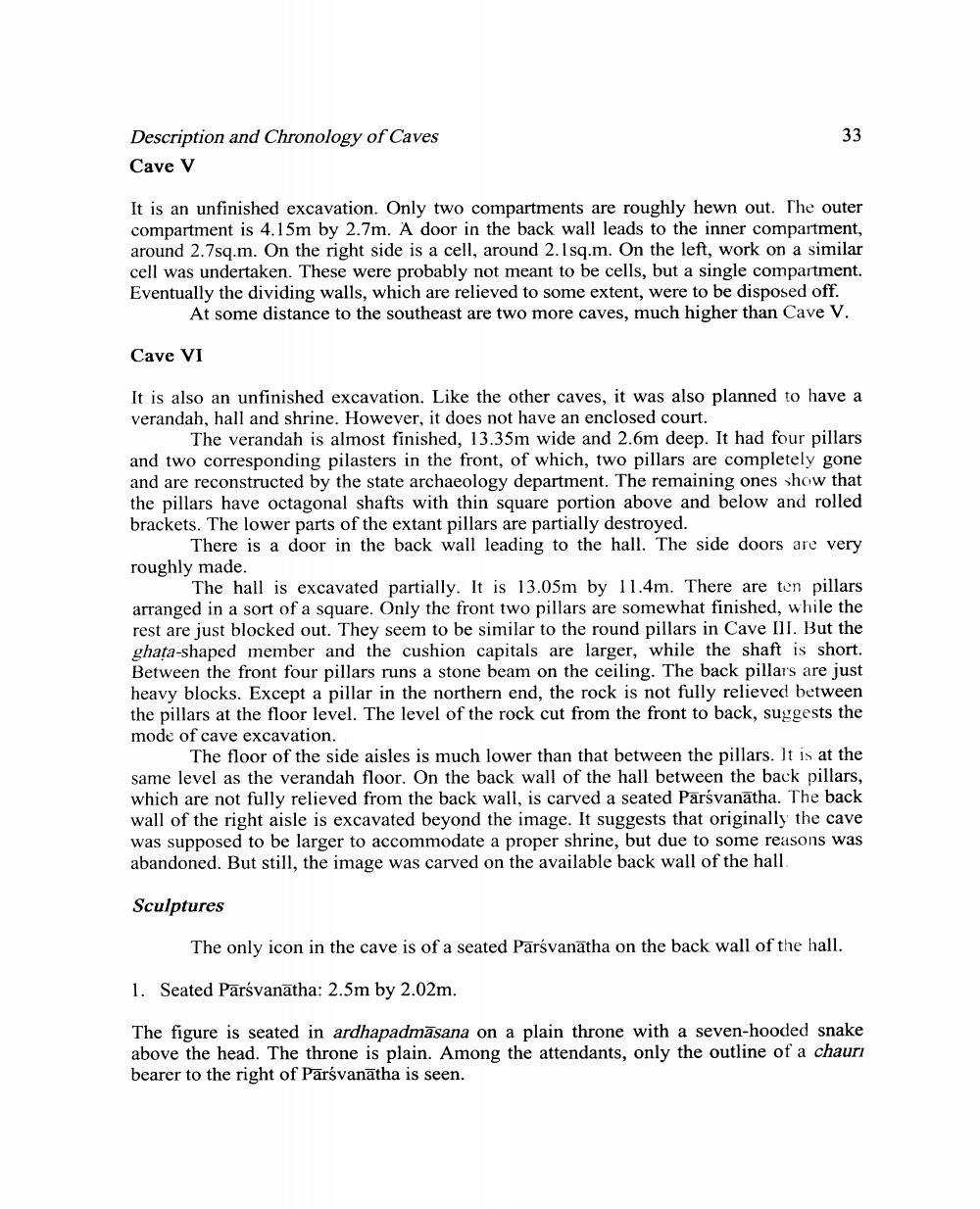________________
Description and Chronology of Caves Cave V
It is an unfinished excavation. Only two compartments are roughly hewn out. The outer compartment is 4.15m by 2.7m. A door in the back wall leads to the inner compartment, around 2.7sq.m. On the right side is a cell, around 2.1 sq.m. On the left, work on a similar cell was undertaken. These were probably not meant to be cells, but a single compartment. Eventually the dividing walls, which are relieved to some extent, were to be disposed off.
At some distance to the southeast are two more caves, much higher than Cave V.
Cave VI
It is also an unfinished excavation. Like the other caves, it was also planned to have a verandah, hall and shrine. However, it does not have an enclosed court.
The verandah is almost finished, 13.35m wide and 2.6m deep. It had four pillars and two corresponding pilasters in the front, of which, two pillars are completely gone and are reconstructed by the state archaeology department. The remaining ones show that the pillars have octagonal shafts with thin square portion above and below and rolled brackets. The lower parts of the extant pillars are partially destroyed.
There is a door in the back wall leading to the hall. The side doors are very roughly made.
The hall is excavated partially. It is 13.05m by 11.4m. There are ten pillars arranged in a sort of a square. Only the front two pillars are somewhat finished, while the rest are just blocked out. They seem to be similar to the round pillars in Cave III. But the ghata-shaped member and the cushion capitals are larger, while the shaft is short. Between the front four pillars runs a stone beam on the ceiling. The back pillars are just heavy blocks. Except a pillar in the northern end, the rock is not fully relieved between the pillars at the floor level. The level of the rock cut from the front to back, suggests the mode of cave excavation.
The floor of the side aisles is much lower than that between the pillars. It is at the same level as the verandah floor. On the back wall of the hall between the back pillars, which are not fully relieved from the back wall, is carved a seated Parsvanatha. The back wall of the right aisle is excavated beyond the image. It suggests that originally the cave was supposed to be larger to accommodate a proper shrine, but due to some reasons was abandoned. But still, the image was carved on the available back wall of the hall
Sculptures
The only icon in the cave is of a seated Parsvanātha on the back wall of the hall.
1. Seated Parsvanātha: 2.5m by 2.02m.
The figure is seated in ardhapadmāsana on a plain throne with a seven-hooded snake above the head. The throne is plain. Among the attendants, only the outline of a chauri bearer to the right of Parsvanātha is seen.




